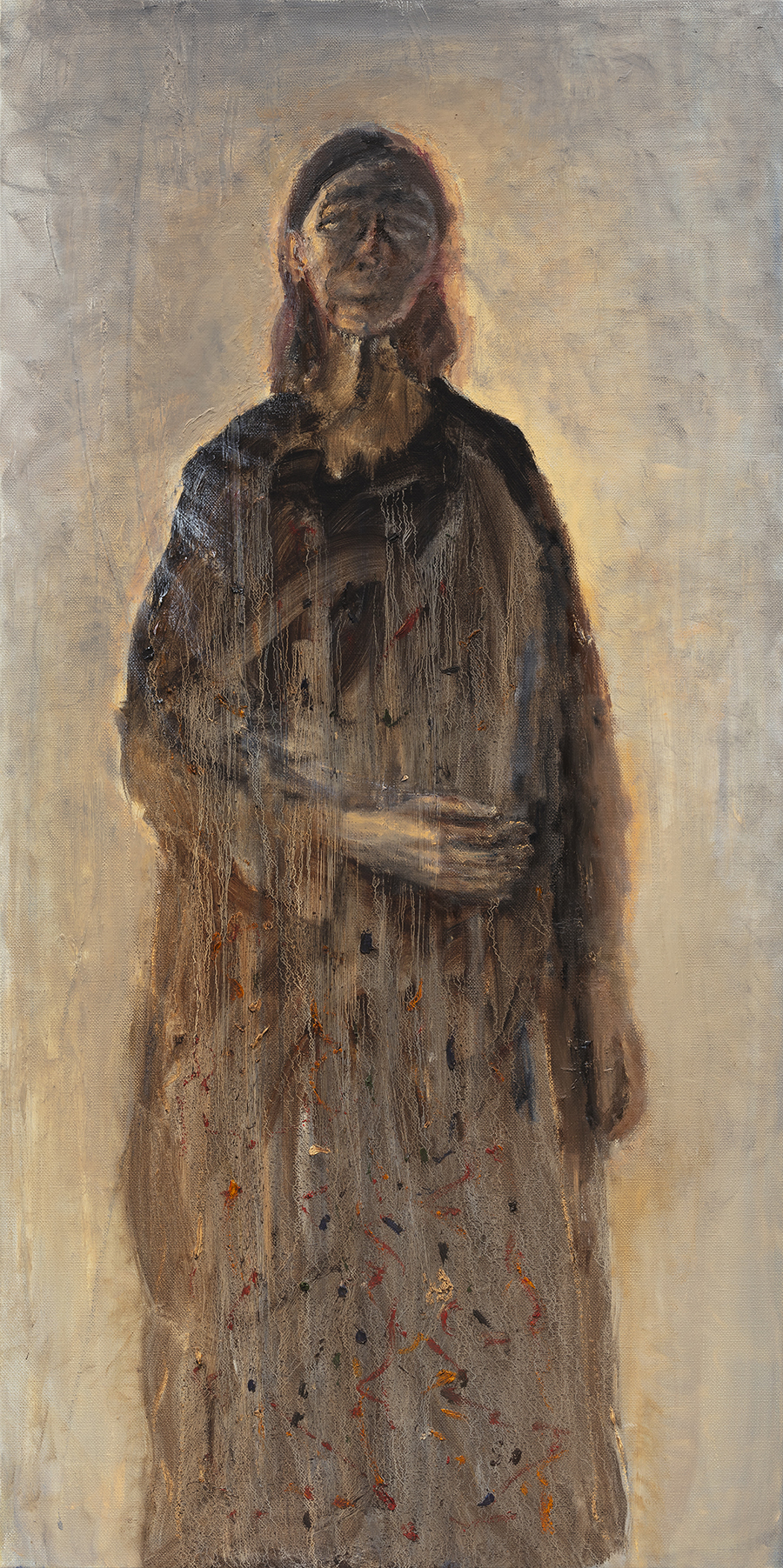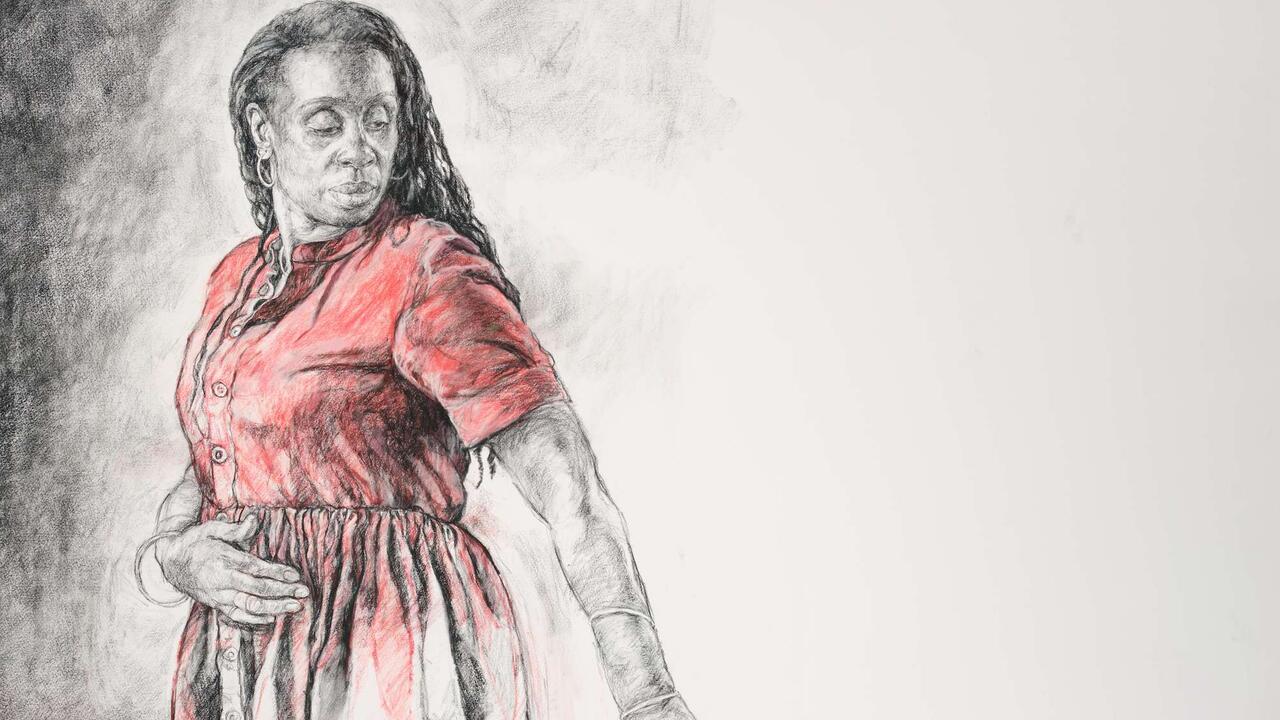A Muse in Her Own Words: Celia Paul’s ‘Self-Portrait’
In the artist’s frank new memoir, her turbulent decade-long relationship with Lucian Freud is one trial of many to be endured in the pursuit of her art
In the artist’s frank new memoir, her turbulent decade-long relationship with Lucian Freud is one trial of many to be endured in the pursuit of her art

‘I have made my life my own story,’ the painter Celia Paul writes in the introduction to her recently published memoir, Self-Portrait. ‘Lucian, particularly, is made part of that story rather than, as is usually the case, me being portrayed as part of his.’ The Lucian in question is Lucian Freud, with whom Paul had a painful ten year relationship and a child. Despite the suggestion of reclaimed narratives, chapter one of her life story is titled ‘Lucian’. He remains the dark sun under which this grimly compelling narrative unfolds.
The book, told through Paul’s reminiscences, historic diary entries, paintings and photographs, begins in 1977, on the day the pair met. She was 18, a student at The Slade School of Fine Art in London. He was 55 and a celebrated painter, who arrived at The Slade for a job as a visiting tutor dressed in an expensive woollen suit. Paul’s first impressions describe a man with comically ghoulish charisma. His face, she writes, ‘had an eerie glow as if it was lit from within, like a candle inside a turnip’. She showed him some earnest studies she had made of her mother. He invited her back to his flat.

What follows is an unedifying pursuit. ‘I watched him kissing me and my mouth was unresponsive,’ Paul writes of their first physical encounter, sprung on her unannounced. ‘I was frightened.’ When she skips school to avoid bumping in to him, he calls her at home. They arrange to meet in Regent’s Park, where he unties her skirt and starts to kiss her waist, an experience that made her ‘very sad, also unnerved’. On other occasions he pushed her against a wall and pinned her to the floor. ‘I felt hemmed in,’ she remembers, ‘I needed to get out.’ One evening, Freud lights a fire in his bedroom made from wooden paintbrushes, a novelistic detail suited to a man who comes across as an emotional arsonist with a blazing ego. Nervous, romantic and no doubt aware of the asymmetry between them, Paul recites him He Wishes for the Cloths of Heaven by W.B. Yeats. The poem is addressed to a more powerful lover, and ends with the following plea for kindness: ‘I have spread my dreams under your feet; tread softly because you tread on my dreams.’ Freud was not a man inclined to tread softly. Instead, he took the girl to bed.

Freud is known to have been something of a bastard in his affairs with women. (He fathered at least 14 children, although some have estimated the number as closer to 40.) From infidelities to gas-lighting, there is plenty of evidence of this in Paul’s book. Given his domineering tendencies, and the formative years she spent with him, the distinction between their painting styles is all the more remarkable. Much of the difference derives from the treatment of the subject. Paul works from a place of intense sensitivity and quietude, focusing on spirit and atmosphere over anatomy, an approach she says is only possible when she has a meaningful bond with her sitters. Tellingly she struggled to paint Freud, who would not allow her to dictate the dynamic between them. ‘Although I was Lucian’s subject,’ she writes, ‘he wasn’t mine.’ In contrast, Freud’s strength lay in his capacity for cruelty, in a gaze capable of dominating and exposing a subject like a cat toying with a bird. Paul recalls the uncomfortable experience of sitting for him naked in 1980. ‘I felt like I was at the doctors, or in hospital, or in the morgue.’
The subjects to whom Paul is most bonded are her female relations, in particular her mother who sat for her many times. ‘The drawings that I showed Lucian at our first meeting at The Slade were the first true works of art I had made, because they were of my mother’, she writes. ‘They were necessary because I loved her.’ Included among the works reproduced in Self-Portrait is My Mother (2005). In the painting she sits in a chair, emanating an old, familial intimacy – the kind of thick, claustrophobic, heavy love that is capable of warping perspective, causing us to encounter those we are closest to through a haze of emotion and memory. Her small body, with its oversized feet and shrunken head, has become one with the ambience of the room. A green fog that hangs in the air is of the same substance as the ghostly pallor that illuminates her skin.

An eponymous exhibition of Paul’s paintings at Victoria Miro in London coincides with the launch of her book. Most of the works on show were made after her mother died in 2015 (Freud had passed away in 2011), but even when she is not the subject she remains present by her absence. My Sisters in Mourning (2015–16), a large oil painting depicted in shades of grey and blue, shows Paul’s four sisters in the aftermath of her death. The women appear like a gathering of saints, sitting in prayerful silence. Paul has added red and navy marks to their noses and eyelids, so that their features appear raw and swollen from sorrow.
The religiosity of Paul’s paintings is no surprise. Her parents were missionaries, and she spent her early years in Thiruvananthapuram, the capital of Kerala. Later, her father became the Bishop of Hull. One sister is a theologian, another a priest and she counts a former Archbishop of Canterbury as a brother-in-law. Her mother used her time sitting for Paul for prayer – ‘a gift for a Christian,’ as she put it. Although she is not personally religious, Paul’s upbringing seems to have instilled a belief in vocation, an interest in the incorporeal presence of her subjects and a respect for cross-bearing. Painting is treated as a call that must be answered, no matter the cost. Three weeks after giving birth to her son Frank in 1984, she left the boy to be raised by her mother. Freud had bought her a flat overlooking the British Museum and she returned here, alone, to paint. The separation may have been a cause of great sadness and anxiety, but she considered it a necessary burden. ‘I had a strong sense of the rightness of the world,’ Paul writes of the happiness she felt after giving birth, ‘I knew it couldn’t last.’

Today Paul still lives and works alone in the flat across from the British Museum. She left Freud after the birth of her son, following one infidelity too many, and later married – although her husband does not live with her and she hasn’t given him a key to her flat. The story she relates through images and words has the feel of a painter’s parable, in which hardship, sacrifice and solitude lead, eventually, to something like grace. There are times when her Christ-like embrace of suffering may grate, but Paul is uninterested in making herself appear more palatable for the benefit of a reader. She accounts for her life like a person peeling off her bandages, often asking her audience to share in her experiences of difficulty and hurt. In the recent painting Self Portrait, Early Summer (2018), on display at Victoria Miro, her martyrdom is complete. She depicts herself sitting at home in her self-imposed convent for one. The light shines down upon her from above, she holds her hands serenely in her lap and looks out towards the viewer. Her tattered studio clothes have transformed into a robe, upon which the encrusted flecks of oil shimmer like gemstones.
Celia Paul’s solo exhibition runs at Victoria Miro Gallery, London, UK, until 20 December 2019. Self-Portrait is published by Jonathan Cape.
Main image: Celia Paul, Lucian and Me (detail), 2019, oil on canvas, 25 × 31 cm. Courtesy: © the artist and Victoria Miro, London/Venice




















